
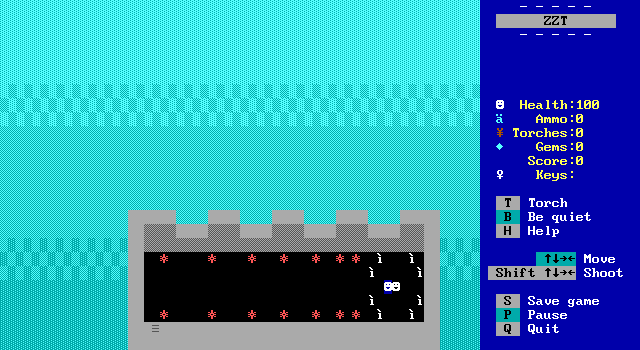
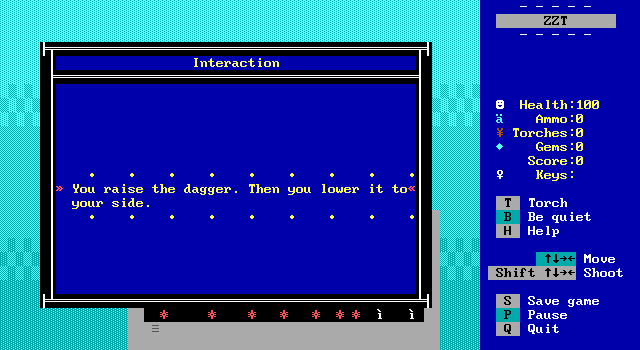

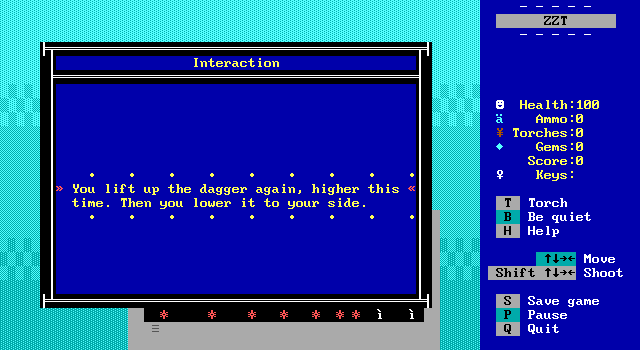

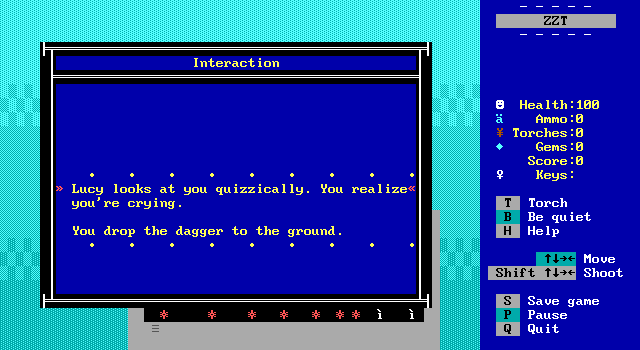
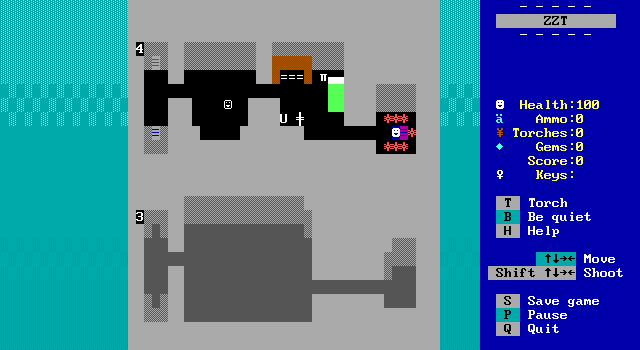
Mary runs.
She runs along the top of her tower and down the stairs, through her bedroom and retreats into her inner sanctum. (The passage to the third floor is blocked by an invisible object saying Mary wants to be alone, ensuring you take her to the portal.)
There have been so many scenes in ZZT where characters have run away, but this may be the first time it's been me making the character run away.
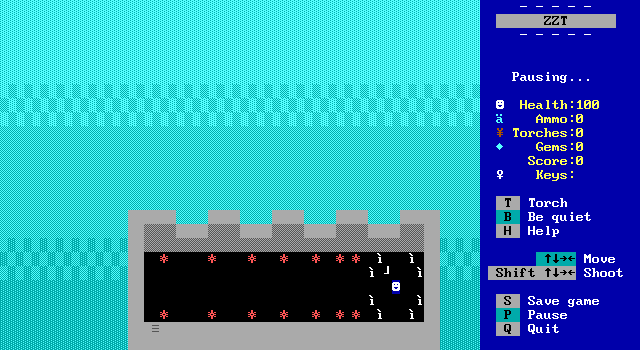
And now is when Thyer ends the scene. Mary is in her soul palace, and now the focus shifts to putting you in control of princess Lucy.
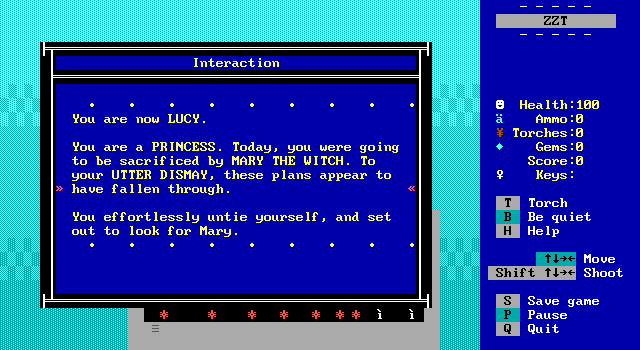
If you had any lingering doubts about how willing Lucy was, this should put an end to them.
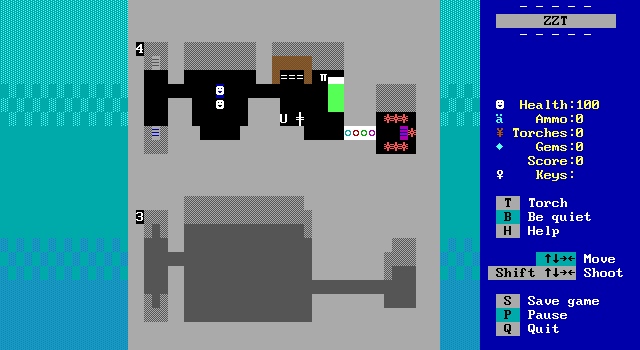
The tower is unchanged as far as its contents, but what is different is the perspective given. Lucy sees things differently and gives her own thoughts on all the items that can be examined.
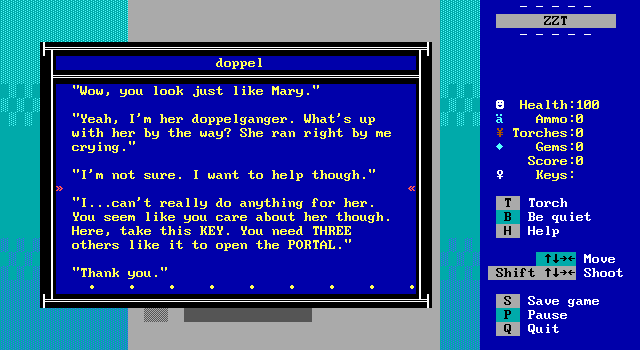
The doppelganger is less malicious towards Lucy and explains what needs to be done next. The portal is blocked off by four locked doors, conveniently scattered throughout the tower.
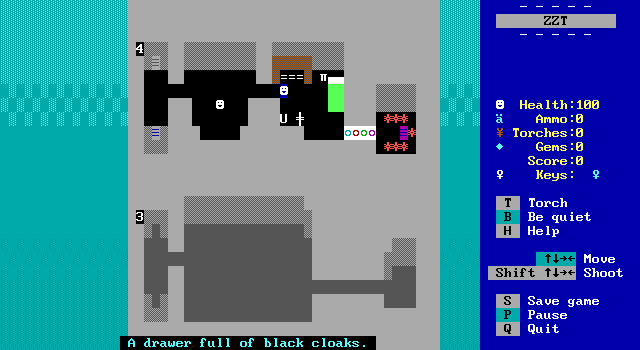
For Mary, the dresser is just where clothes are kept, with no need to think about them since she's already dressed. For Lucy, the dresser is something to explore. Drawers are opened and unmentionables are mentioned.
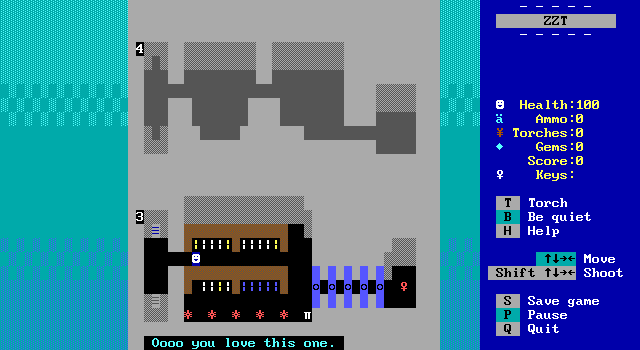
The realization that everything has a new message when touched makes it exciting to explore the same layout with a new protagonist. Mary tells you what the books are about (daring escape, unjust death, witches in love, and a witch from space) versus Lucy's short reviews for the same books.
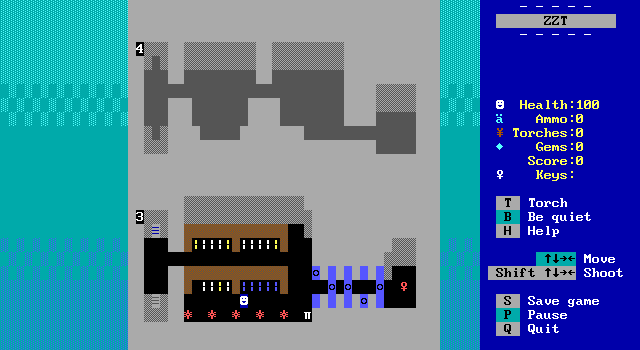
And while Mary didn't want to do puzzles, Lucy has to. Each of the books here switches the open/closed state of some of the doors to the red key. There are only a few switches so it's not really something you need to plan your way through. It's finished quickly enough just by flipping a few at random and having a vague idea of which switch will help open a currently closed door.
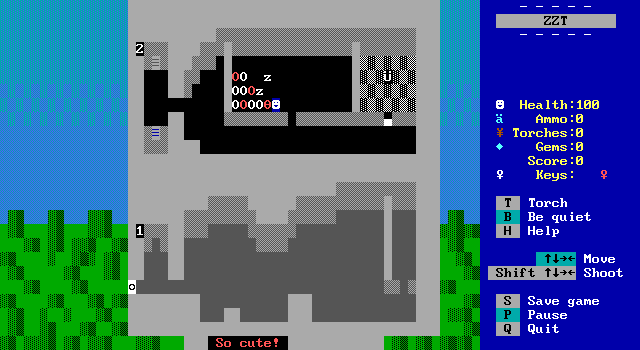
They're sleeping! I love them!
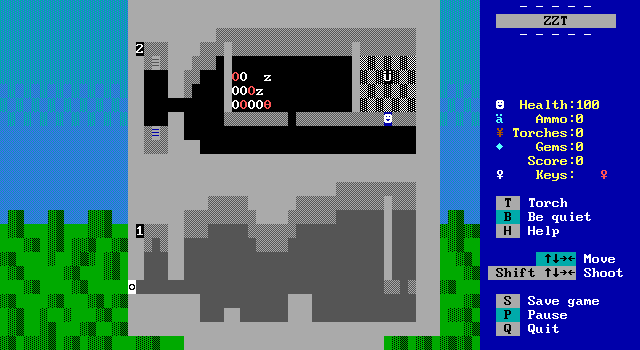
Too bad for Lucy this means talking to Arachne.
If I do have one complaint about this game, it's that we don't really know if Lucy has been to this tower before. She's read all of Mary's witch stories, but that may just be them sharing a similar taste in literature. We don't really know if she's blindly stepping into danger here or not.
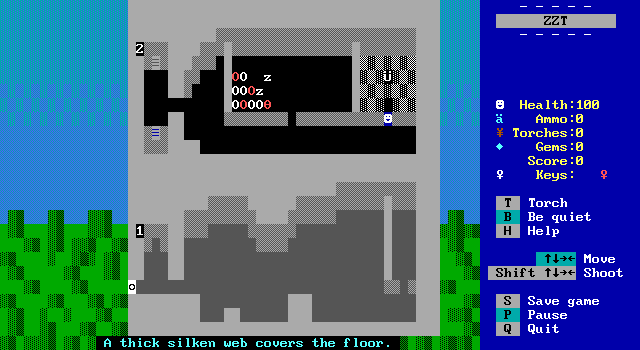
Admittedly, that may be the point. Each step into the spider goddess's lair requires breaking through some webbing which makes approaching her feel slow and deliberate.
"Hello there pet. Nice to see a new face.
Did you bring me a meal?"
"N-no. I'm trying to help Mary."
"Aww, is my Mary hurting? She's a fragile
little thing, but I care for her. I take
it the sacrifice didn't go as planned?"
"No, it didn't."
"You look sad, pet."
"I just...want Mary to feel better."
"Hmm. I think you can help her. Here, take
this KEY."
"Thank you so much."
"Come back when you're done, I'd love
to...get to know you better."
• • • • • • • • •
Arachne immediately takes an interest in Lucy, but is aware that she's probably not supposed to be her dinner. She offers up the third key.

Finally, there's the whole death chamber to navigate.
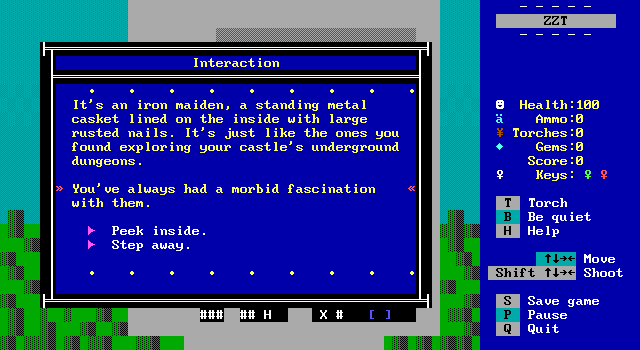
Starting with the iron maiden that Lucy takes much more of an interest in.
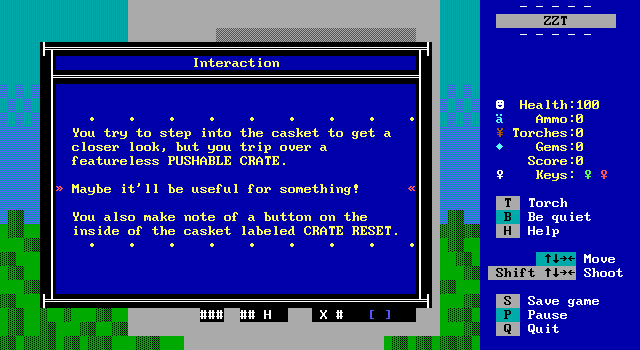
This time, there's a second boulder to push around which is necessary to make the puzzle solvable. Mary mentioned that the iron maiden might be useful in the future, and I raised issue with how it didn't fit with the way the game was structured, and now you can see what I mean. Mary doesn't use the iron maiden at any point, and by this point it's well established that Lucy gets her own unique messages when looking at Mary's things that the hint feels very pointless. I cannot imagine somebody not re-examining anything in the tower once they take over for Lucy.
The iron maiden can also reset the crates if the player breaks things, which is a much more welcome feature to prevent potential soft locks.

The boulder gets pushed along as Lucy checks out the other devices.
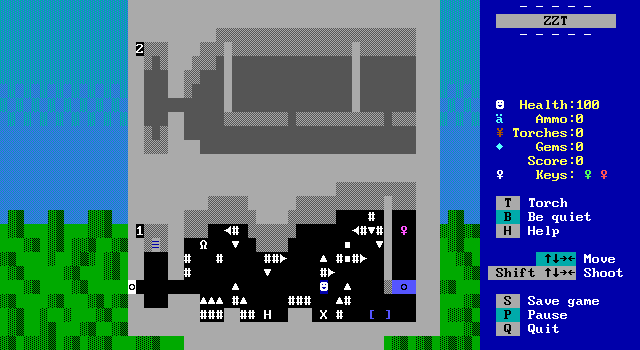
With two boulders in play, the spikes push them in a way that Lucy can get to one from the side and maneuver it to the spot for it to hold the door open.
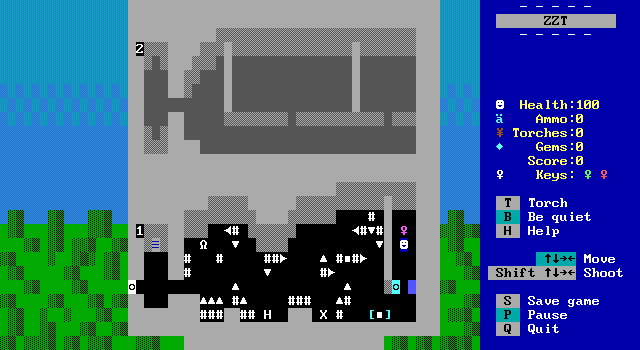
And with that, all four keys have been collected! It's time to enter Mary's soul palace.
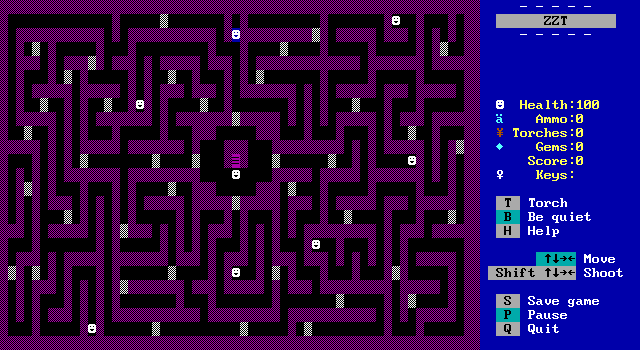
This time, it is very much a maze, but one that's fits the story so I'm still okay with it.
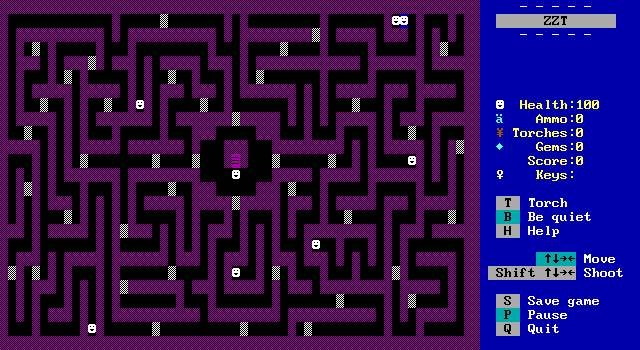
A lot of the passages are blocked off by white walls, and it takes a moment to notice that there are some more smiley objects around the room. Only one can be accessed at a time and they're the key to progressing through Mary's clouded mind.
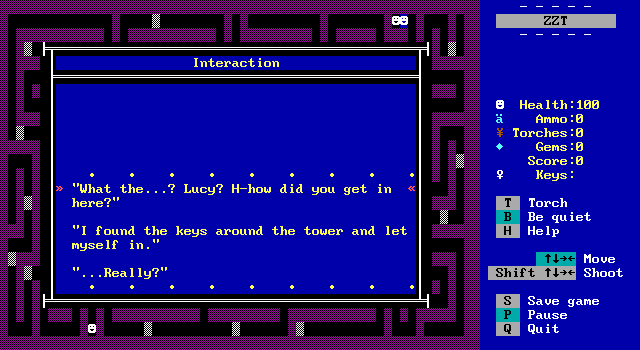
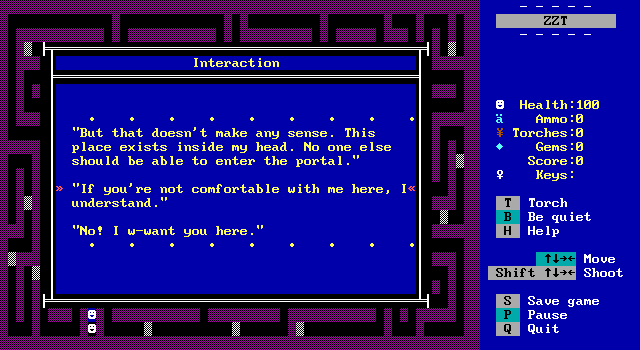
Lucy's presence is a mystery, but ultimately a welcome one. Slowly Mary begins to open up how she feels.
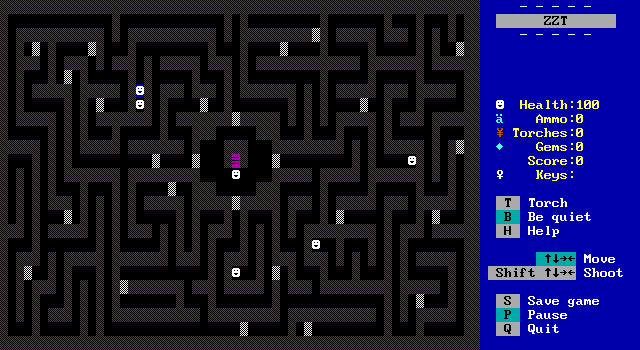
And things are looking more clear as the two talk.
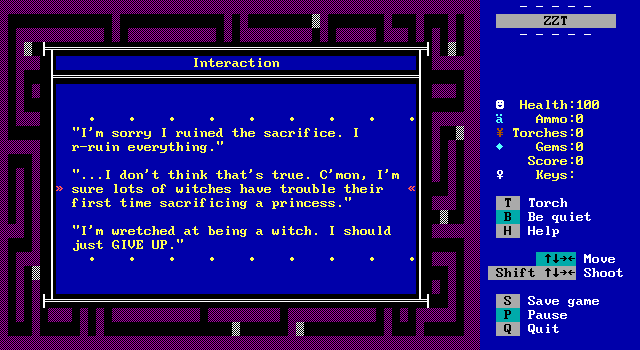
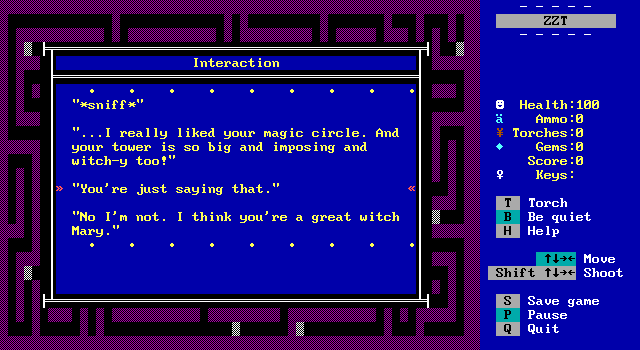
The two have an important discussion and Lucy begins to open herself up as well.
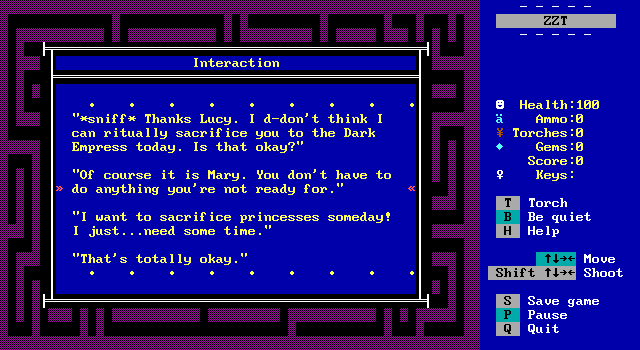
Today is a day for self-care.
"Hey Mary, can I tell you something?"
"What?"
"I kinda...want to be a witch. I've wanted
to for a while now."
"Really? Well that's easy!"
"It is? It always seemed so out-of-reach
for a person like me."
"Nope. All you have to do to be a witch is
just be a witch. If you've decided to be
one, you are one. Simple as that."
"Then...I'm a witch."
"You're a witch."
• • • • • • • • •
In this shared moment of vulnerability, Lucy confesses that she wants to be a witch herself and learns that being a witch isn't performative. It's not something you do, but something you are.
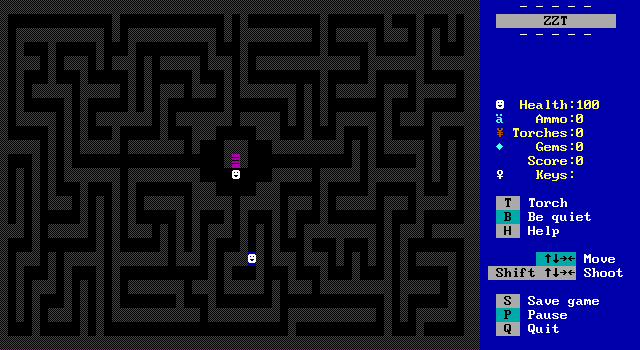
The mind palace is clear once more, and there's just one last Mary to speak with.

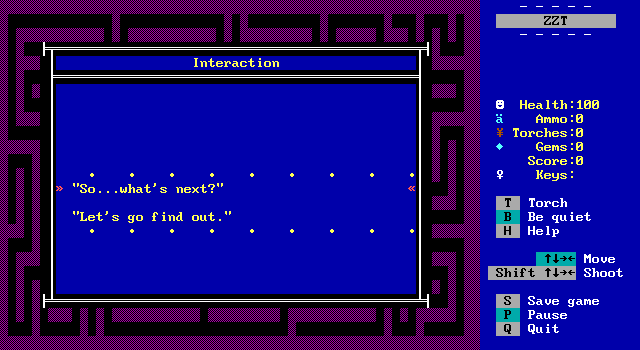

A new connection is made and with it, the start of a romantic relationship. Lucy and Mary, together as witches.
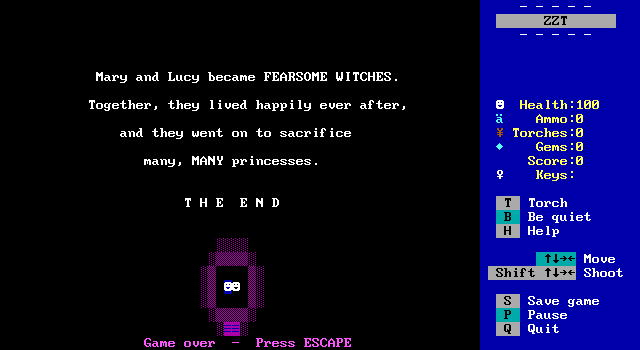
And a happy ending for them both.
Final Thoughts
Hey. This is a stellar game that I think perfectly exemplifies why ZZT is a great storytelling medium. At the time of the release, it would require DOSBox, adding a hurdle of complexity to get people to be able to play it, but these days with Asie's Zeta, it's incredible easy to share a small experience like this.
The story it tells takes serious issues like anxiety and expressing yourself and your romantic interests and presents them in a lighthearted but non-disrespectful way that's fun to explore. It's a very compelling game, despite there being so little actually to it. Atop The Witch's Tower demonstrates ZZT's parity with other story focused gaming mediums like Twine and Bitsy. It shows what a powerful tool it can be in the right hands, and how you don't need experience with ZZT to make something wonderful in it.
Thyer was working so completely outside the community that this game was made entirely with the ZZT's default editor. It wasn't until the livestream that he learned that tools like KevEdit even existed. It's really fascinating to see how a game this recent can capture the feelings and aesthetics of some of ZZT's earliest worlds by virtue of them being games first and "ZZT games" second. The programming is very simple, and demonstrates the power of ZZT's simplicity wonderfully.
It was a treat to play through it when it was new, and was great to revisit. If making a game seems daunting, this is the game that can sell you on trying out ZZT. If you have a story that needs telling, perhaps a white on blue smiley face can convey more emotions than their eternal grin would suggest.

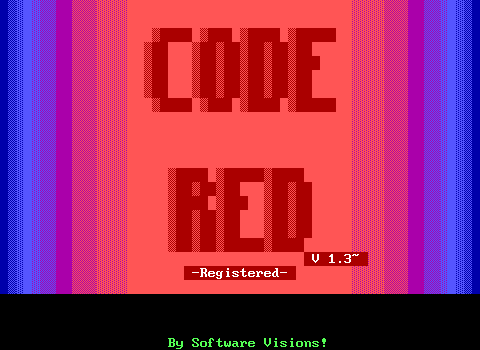

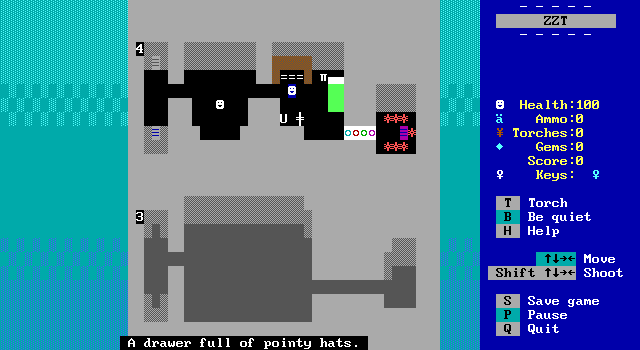
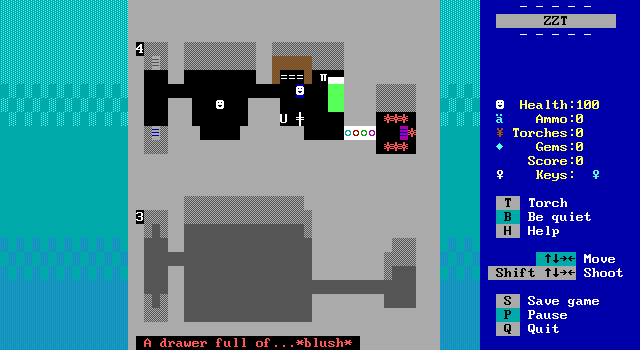
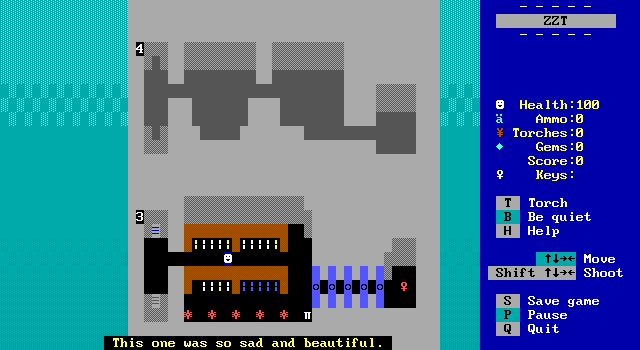
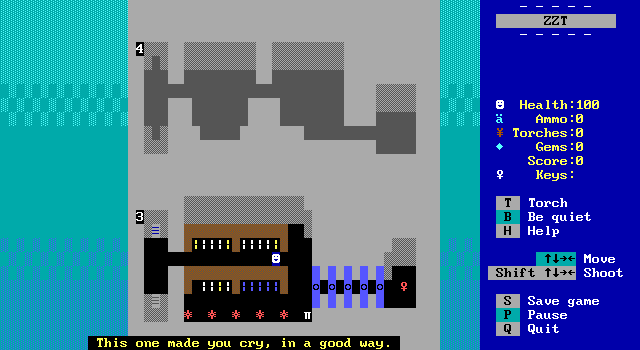

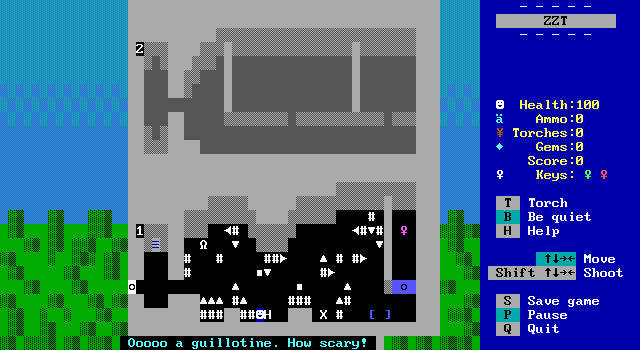
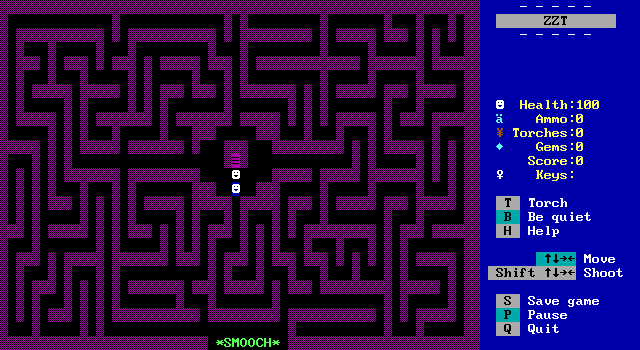
What Thyer does here is something I don't think I've seen a ZZT game do before, and it comes off as an incredibly powerful storytelling technique for the medium.
Each time Mary attempts to complete the sacrifice, she stops, but this isn't told through narration, but actually closing the text box, causing the player themselves to actually pause and wait for something to happen before touching the Lucy object again. Each attempt is felt because of it. Thyer's idea to not have you sit and read or watch Mary's inability to finish the sacrifice but to put you in control of it just immediately make this one of the most memorable dramatic scenes I've seen in ZZT.
It's not even over at this point. Mary has realized she's unable to do the deed and Lucy can only comment with "Mary?", and while any other ZZT world's author would say this is the time to end the scene and make the player either walk to the next board via a passage for a traditional cutscene or maybe use a player clone and duplicator setup to automatically do so, Thyer still lets it linger.
In reality you only have one option, but by making the player do it rather than an object it feels much more powerful of a moment.